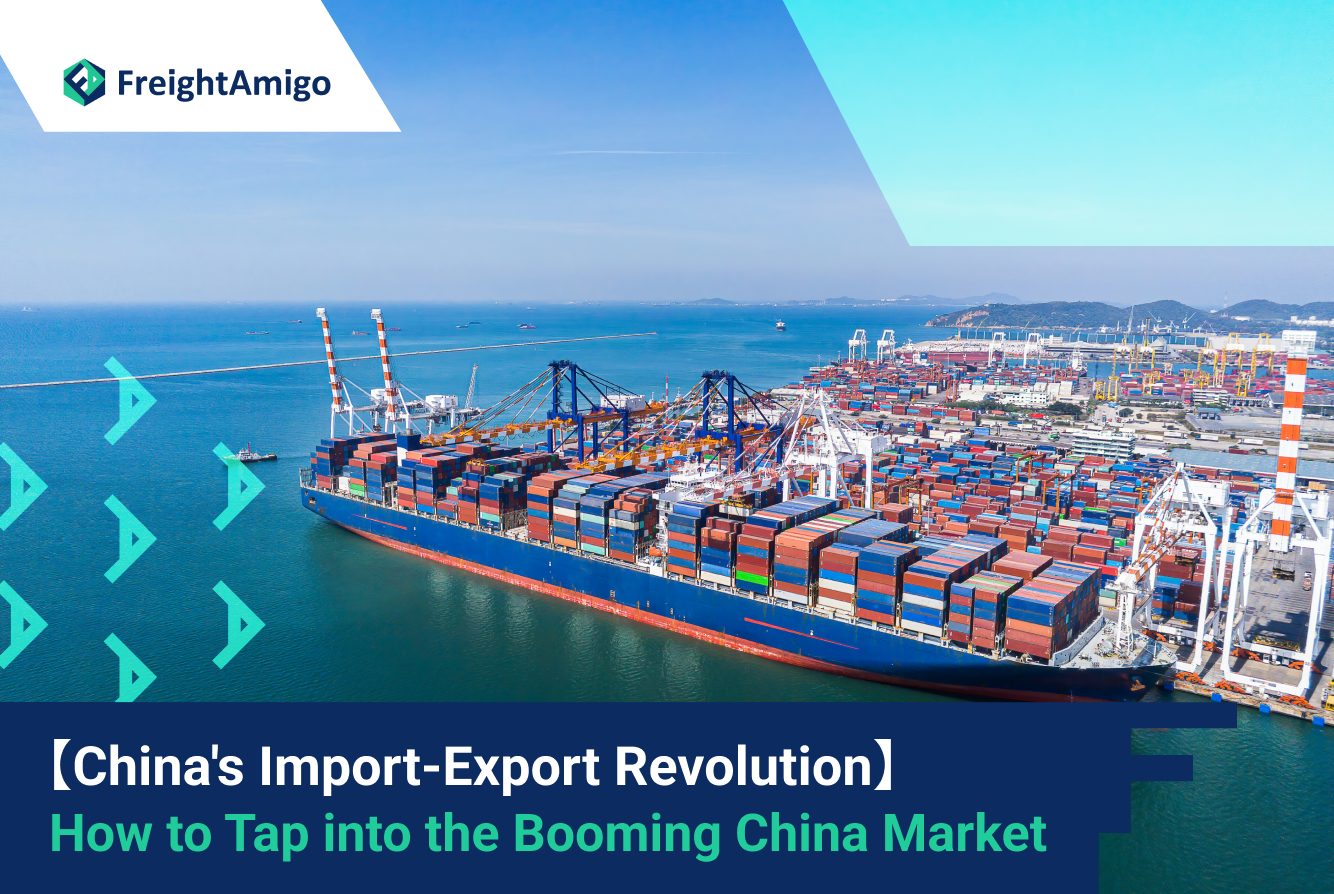Author Name: Tiffany Lee – Marketing Analyst at FreightAmigo
Introduction to China’s Import-Export Market
China’s import-export market has been experiencing a revolution in recent years, making it an attractive destination for businesses looking to expand their global reach. With its strong manufacturing base and growing consumer market, China offers immense opportunities for both importers and exporters. This article will provide a comprehensive overview of China’s import-export market, including key sectors and products, benefits of tapping into the market, and challenges to consider. By the end, readers will have a solid understanding of how to navigate this booming market and seize the opportunities it presents.
Want To Compare The Best Express, Air Freight, Sea Freight, Rail Freight & Trucking Rates So As To Have Better Control On Cost?
China’s Export Industry: Key Sectors and Products
China’s export industry is diverse and encompasses a wide range of sectors and products. Some of the key sectors driving China’s exports include electronics, textiles and apparel, machinery, and automotive. The country has become a global manufacturing hub, with its factories producing goods that are in high demand worldwide. From smartphones and computers to clothing and furniture, Chinese exporters have established a reputation for delivering quality products at competitive prices. This has made China the world’s largest exporter, with a significant share of global trade.
China’s Import Industry: Key Sectors and Products
While China is known for its export prowess, it is also a major player in the import market. The country relies on imports to meet the demands of its rapidly growing consumer market and to support its industries. Key sectors for imports include machinery and equipment, energy resources, chemicals, and agricultural products. China’s appetite for raw materials and technology has created lucrative opportunities for foreign exporters. Whether it’s supplying advanced manufacturing equipment or exporting agricultural commodities, businesses can tap into China’s import market to benefit from its vast consumer base and industrial needs.
Benefits of Tapping into the China Market
Tapping into the China market offers numerous benefits for businesses looking to expand their global footprint. Firstly, China’s massive consumer base presents a significant opportunity to increase sales and revenue. With a population of over 1.4 billion people, the country offers a ready market for a wide range of products and services. Secondly, China’s manufacturing capabilities and cost advantages make it an attractive destination for businesses looking to source products at competitive prices. By importing from China, businesses can access a wide range of high-quality products at lower costs, increasing their profitability. Lastly, establishing a presence in China can provide businesses with valuable insights into the local market and help build strategic partnerships with Chinese companies.
Challenges and Considerations When Importing from China
While the China market offers immense opportunities, there are also challenges and considerations that businesses need to be aware of when importing from China. One of the key challenges is navigating the complex regulatory environment. Importing goods into China requires compliance with various regulations and customs procedures, which can be time-consuming and costly. Additionally, intellectual property protection is a concern, as counterfeiting and piracy remain prevalent in certain sectors. It is essential for businesses to conduct thorough due diligence and work with trusted partners to mitigate these risks. Cultural and language differences can also pose challenges, highlighting the importance of building strong relationships and understanding local business practices.
Resources for Trade with China: Trade Fairs, Associations, and Government Programs
To facilitate trade with China, there are numerous resources available to businesses. Trade fairs and exhibitions provide an excellent platform for networking, showcasing products, and meeting potential business partners. China hosts a variety of international trade fairs throughout the year, focusing on different industries and sectors. Joining industry associations and chambers of commerce can also provide valuable connections and access to market insights. These organizations often organize trade missions and events to promote business collaboration. Additionally, governments, both in China and abroad, offer various programs and initiatives to support trade with China. These can include grants, subsidies, and market access assistance, which can significantly benefit businesses looking to tap into the China market.
Conclusion: Seizing the Opportunities in China’s Import-Export Market
China’s import-export market presents a wealth of opportunities for businesses looking to expand their global reach. With its strong manufacturing base, vast consumer market, and growing import needs, China offers immense potential for both importers and exporters. Despite the challenges and considerations, businesses that navigate the regulatory environment, protect their intellectual property, and build strong relationships can thrive in this dynamic market. By tapping into the China market, businesses can increase their sales, access high-quality products at competitive prices, and gain valuable insights into the local market. The time is ripe to seize the opportunities in China’s import-export revolution.
There Are Different Options For Cargo Transportation. If You Want To Choose The Most Convenient And Suitable Solution, It Is Best To Have The Full Support Of Logistics Experts! If You Are Planning To Ship Goods Overseas, Please Go To The FreightAmigo Page For Inquiries.
===
Read More:
【Logistics News】Singapore to Sign Declaration on Green Shipping Corridors
FreightAmigo Won Startup Grand Award In TechChallenge — Digitising Trade Finance
Sailing Schedule: Streamlining Logistics Operations for Efficient Shipments
===
If you have any inquiries on logistics/supply chain, feel free to contact FreightAmigo now:
Chat with us online OR
Phone : +852 28121686
WhatsApp: +852 27467829



